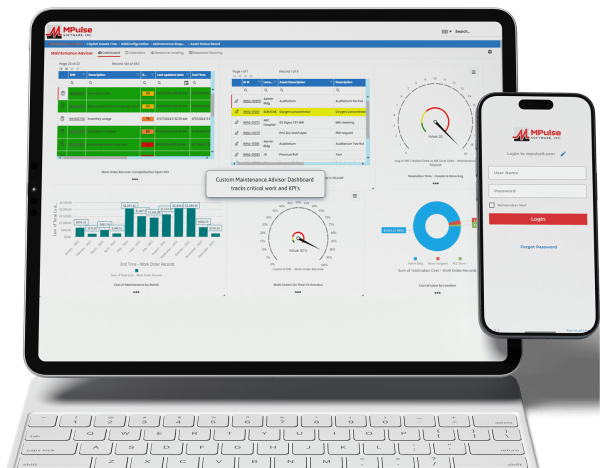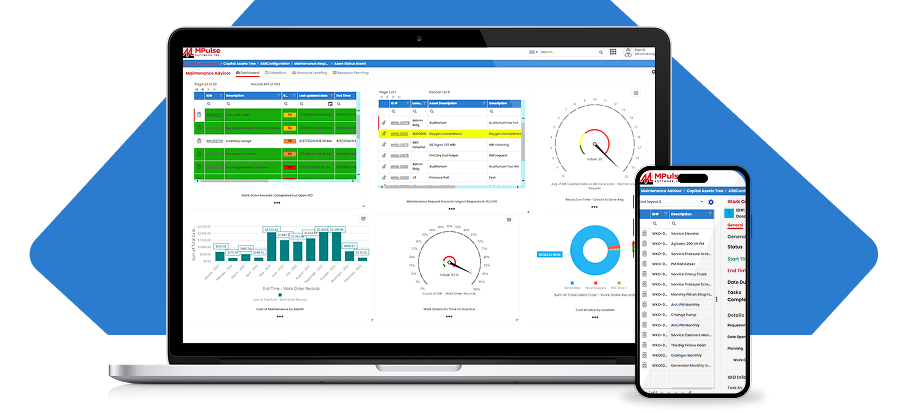As food manufacturing maintenance teams know, compliance is all about visibility. Staying on top of regulations is crucial for maintaining operations and avoiding costly penalties.
Food processing is one of the most regulated industries globally, governed by a variety of federal, state, and international guidelines. Key regulatory bodies include OSHA, the U.S. FDA, and the Global Food Safety Initiative, all of which set stringent standards for safety and sanitation. On top of these regulations, customers may also conduct plant visits to ensure companies meet their own standards of quality and safety.
MPulse CMMS software simplifies compliance management by organizing and tracking the required paperwork. As a result, your food manufacturing maintenance team stays compliant with minimal effort.
Table of Contents
Food Manufacturing Maintenance Professional’s Guide to OSHA Standards
Like many other sectors, food manufacturing must adhere to OSHA 1910, which sets general industry standards, and OSHA 1928, which specifically applies to agriculture. Some of the most frequently cited OSHA standards in food manufacturing include:
OSHA 1910.22: Housekeeping
In food production, cleanliness is paramount for both food safety and worker safety. OSHA 1910.22, a housekeeping standard that applies to all industries, requires facilities to maintain clean, orderly, and sanitary conditions. It mandates that workroom floors remain clean and dry whenever possible, and that all areas are kept free of hazards to facilitate safe, effective cleaning.
OSHA 1910.263: Bakery Equipment
This standard focuses on the design, installation, operation, and maintenance of bakery equipment, with a special emphasis on managing risks related to combustible dust. OSHA classifies many common bakery ingredients, including flour, sugar, spices, and cornstarch, as combustible agriculture dusts. Standard 1910.263 outlines strategies for reducing these risks by controlling exposure to hazardous ingredients such as wheat, rice, oat, potato, and rye flours.
OSHA 1910.272: Grain Handling Facilities
Grain handling is classified as a “high hazard industry” due to the risk of combustible grain dust. To prevent explosions, OSHA requires strict controls on grain dust. That includes implementing a preventive maintenance program, minimizing ignition sources, and properly installing dust collection systems. Grain handling facilities must follow these regulations carefully to avoid significant hazards.
OSHA 1910.307: Hazardous (Classified) Locations
Any area where flammable substances or combustible dusts are present is classified as a hazardous location. OSHA 1910.307 specifies which equipment is approved for use in these environments to minimize the risk of fire or explosion.
Additional OSHA Standards in for Food Manufacturing
OSHA also publishes industry-specific food manufacturing standards, including those for meatpacking, poultry processing, and the manufacture of certain food flavorings. These standards complement general regulations by addressing unique hazards and safety requirements within specific food production sectors.
Balancing Compliance with Quality Control and Budget Constraints in Food Manufacturing
In addition to adhering to OSHA regulations, food manufacturing maintenance teams must manage a delicate balance between compliance, quality control, and budget limitations. Routine maintenance tasks, combined with the need to meet regulatory requirements, can place significant strain on resources.
However, failing to comply with OSHA standards can result in costly violations that impact both the budget and the reputation of the company. That’s why proactive compliance management is critical. MPulse CMMS software streamlines this process by providing a centralized platform for tracking regulatory requirements, maintenance schedules, and audit-ready reports, ensuring your team stays ahead of compliance challenges.
Food processing is a cost-sensitive industry, and any violation of OSHA regulations can lead to expensive consequences. Let MPulse help you manage compliance more efficiently. Contact us to learn how our CMMS software can assist in maintaining regulatory standards while optimizing your maintenance operations.






